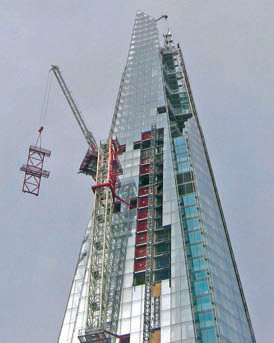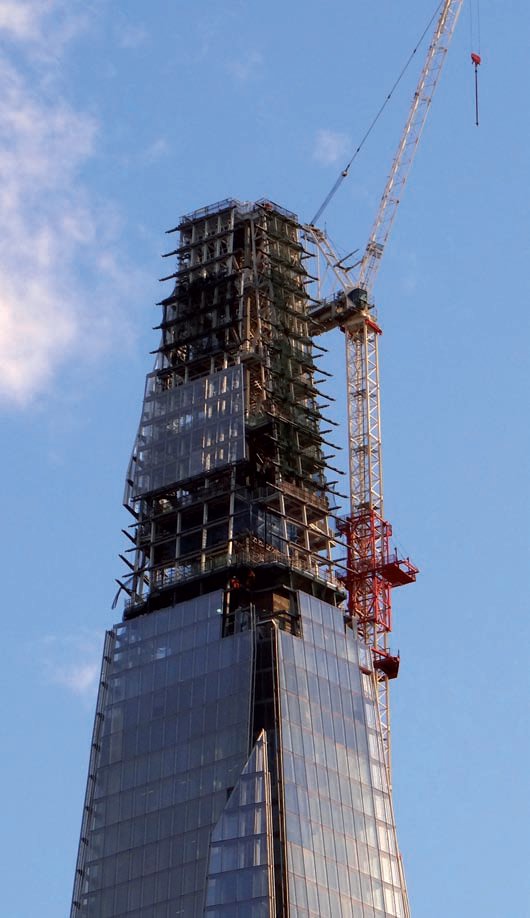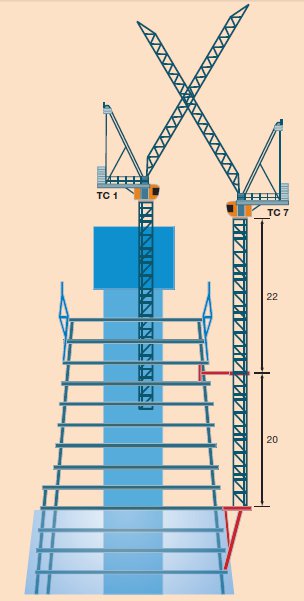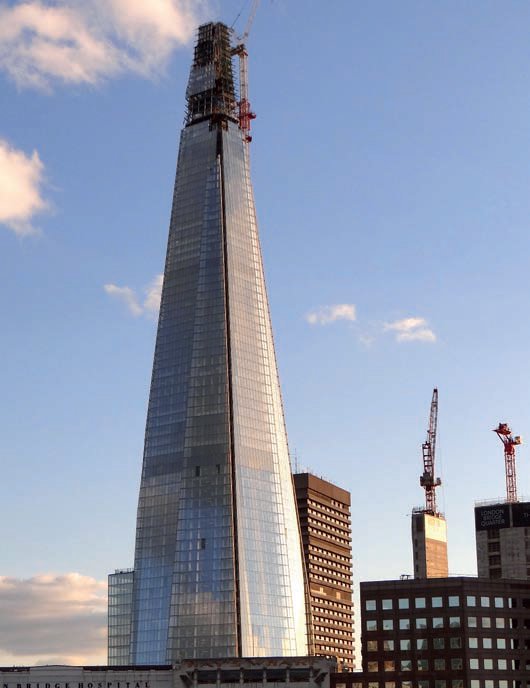From a London landmark, to a world of lift planning
18 March 2014The term consultant isn’t one that is really associated with the lifting industry, it’s phrase that conjures images of suits and offices, rather than the heavy machinery and building sites. However, Van Doorn Tower Crane Consultants are just that, consultants in the lifting industry. Having built their repuation in the UK the company now travels the globe working on a vast array of different projects.
When passing a jobsite it's easy to assume that all the tower cranes have been set up in the most efficient and cost effective way, or that the site has exactly the right number to perform all the tasks it needs to. But as with many parts of the construction industry it's rarely as simple as that. Even the most experienced staff can be unaware of details that can alter the shape of a jobsite.
Van Doorn Tower Crane Consultant's was formed when cofounders Dayne Davis and Cornelius Van Doorn met on a tower crane project in London. The pair hit it off and based on their collective experience decided to form a tower crane consultancy firm. The first project they were hired to was the Shard and since then they have rarely been out of work as Dayne Davis explains: "The firm started at probably the worst time for a new business at the height of the recession, but we were lucky to be brought in for several pinnacle projects in London. Over the last two to three years we've completed around 150 projects. This ranges from high price residential buildings such as the Shard and the Cheesegrater, where we were taken on by Select Plant Hire as sub contractors to complete the climbing and rigging operations, to work on blocks of apartments that are just five to six stories high."
"The largest and most exciting project we've worked on has probably been the Cheesegrater in London. This presented many challenges as we had to be move 250t cranes in a built up downtown area of the city. Its a common part of the job for us to be working in confined areas surrounded by other buildings, in these instances the size and capacity of the crane is crucial. In the case of the Cheesegrater the shape of the building was also a factor with one side positioned at an unusual angle."
The company doesn't just work on the jobsite their advice is used across many different stages by those running a particular job. As Davis says sometimes the advice can remain at the tender: "We work at all the different phases of the construction project, with different companies approaching us at different times. This can mean that we work with them at the tender stage as a pre construction service right through to helping with rigging operations on ongoing sites. We cover many different aspects of the industry from advising on which crane to bring in, to whether it is cost effective for a contractor to buy new, secondhand or rent."
"We do find that when money is tight on a project they will bring us in to work on it. We can advise firms to take steps to make sure that the can use cranes in a cost effective way. In Western Europe are work is predominantly about on site application putting the crane up, servicing it, taking it down and the transportation on and off site. We tend to get hired for these services more than in developing countries."
"We have a full order book for the first quarter of this year. I believe we are seeing a recovery in Britain to an extent that has not been witnessed since pre 2008. This will get better in the coming year. We see developments in Western Europe with a large number of projects upcoming. We hope over the next few years that the market will grow and we can move alongside it. To keep growing as company we have had to go abroad. With our company being known to have a proven track record of completing prestige projects this definitely helps us when it comes to attracting new business. Eliminating risk is one of the main battles that goes on within the construction sector."
Van Doorn encounter a range of vastly different environments they see the difficulties that can be faced trying to get heavy pieces of machinery to remote areas of African rainforest to building hydroelectric dams in Latin America the firm see a lot. One thing that varies from place to place is safety procedures and legislation relating to it. As a tower crane consultancy firm they need to be on top of this from the very earliest stages. Having a piece of paperwork delaying a job is simply not an option for a firm hired for its expertise in this very specific field.
"Although we have often been able to cut the time on projects, our highest priority is always safety. In London we have to file Reliability, Availability, Maintainability, Safety (RAM's) paperwork: which need to go in advance of a project being done. Obviously it's great that these measures are in place, but it can also be the hardest part of the job."
The firm has global experience and says that when it comes to the tower crane sector the difference between projects region to region is immense: "The best aspect of working in Western Europe is the sheer size of the projects being worked on. In this region the tower crane segment probably has more new cranes purchased compared to developing countries."
Van Doorn's reach seems set to remain particularly wide, the firm took up work in far flung destinations in order to maintain the fast growing business: "Other areas of growth are countries such as Brazil along with South America as a wider continent. Africa is becoming a huge market for us we've done five projects in the last six months. It's very much the next frontier for growth better sales this year but its still behind on the pre 2008 figures."
Considering the fast process that Van Doorn has made since its inception it seems likely that the company will continue to grow. As long as there is a steady demand for tower cranes contractors are going to want advice on the best way to rig these machines to save time and money.



